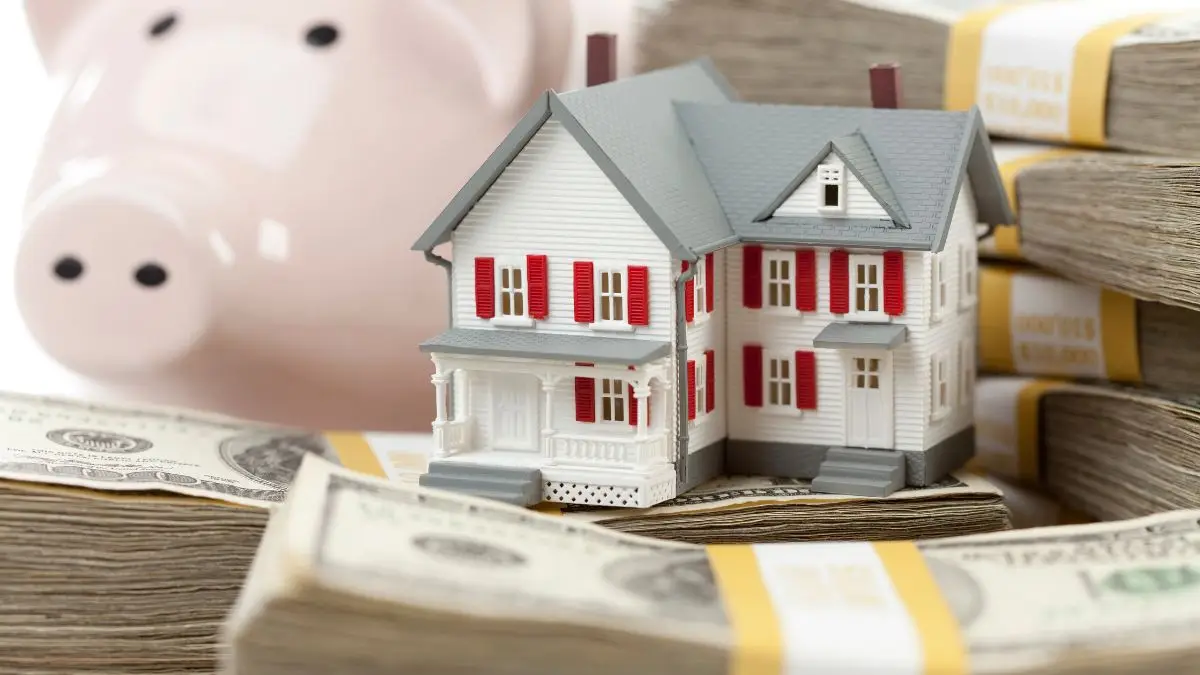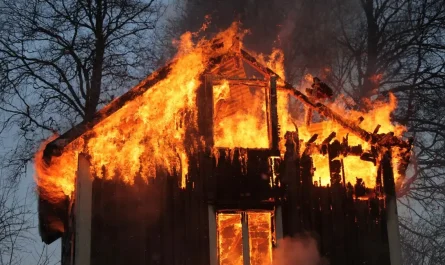US Housing Market Slows in June Despite All-Time High Prices
To be honest, there’s something odd about seeing a decline in home sales as prices continue to rise. In June, that is precisely what took place. The National Association of Realtors reports that existing-home sales fell 2.7% from May to 3.93 million units annually. It’s the lowest since September of last year.
The median home price reached a record high of $435,300 at the same period. Even though many people are still unable to buy it, that is the 24th consecutive year-over-year gain.
What about that disconnect? It’s more than just annoying. It is changing who is eligible to own a home in America and who is continuously being excluded.
What the June Numbers Really Tell Us?
June most likely sent you conflicting messages if you’ve been attempting to stay on top of the real estate market. On the one hand, sales have decreased, which is significant. However, prices broke records rather than just holding steady.
The World Property Journal reports that existing-home sales in the United States experienced one of the biggest month-over-month drops of the year, falling 2.7% from May. Surprisingly, the market reached an annualized rate of 3.93 million units, which was almost identical to June 2024. However, the steadiness ends there.
The price soared to $435,300, the biggest amount ever recorded for June. For the 24th consecutive year, prices have increased, and this trend is continuing. So, are you anticipating a price adjustment? It hasn’t arrived yet.
The reason for this is that supply is still limited. About 1.53 million houses were on the market last year, a tiny increase in inventory, but not enough to make up for it.
You’re not dreaming. In some respects, things are slowing down, yet shopping doesn’t seem any simpler.
What s Really Dragging Sales Down?
You may be asking why more individuals aren’t investing if the market is cooling.
Interest rates are the response. In June, mortgage rates remained stubbornly high, averaging 6.75 percent, according to Reuters. With current costs, that kind of rate can potentially increase your monthly payment by hundreds.
The worst part is that a lot of existing homeowners also don’t want to sell. Would you actually trade in a home you purchased a few years ago with a 3% mortgage for a 6.75% one? Most likely not. This phenomenon is known as the lock-in effect.
The current state of the market is one in which sellers are unwilling to sell and buyers are unable to afford to buy. Despite the fact that there is still demand beneath the surface, everything is slowed down by a perfect storm.
And if this is your first purchase? Most likely, you’re feeling the pinch the most. The worst time to deal with high prices is when you’re just trying to get in.
You’re not alone if you feel trapped in a high-rent scenario as rates continue to rise.For three years in a row, this California town has led the U.S. rental market, demonstrating how unaffordable purchasing has become for many.
The Wealth Divide Is Getting Wider
Let’s discuss a topic that doesn’t often make news: how this market is widening the gap between owners and the general public.
According to Lawrence Yun of the National Association of Realtors, homeowners have increased their equity by an average of $141,000 during the last five years. That is actual wealth that is confined to their residences. However, that wealth disparity continues to widen in front of you if you’re renting or making your first attempt at buying.
The ratio of first-time purchasers is still steady around 30%, despite a decline in home sales. That is significantly less than what we would anticipate in a thriving economy.
And you sense it, don’t you? After saving, looking through listings, and doing the math, it seems difficult to make a 20% down payment. The feeling of being shut out extends beyond money. It’s sentimental.
Have you been unable to obtain homeownership recently, or have you been successful? How you’re handling this market would be fascinating to hear. Share your story in the comments section.
Some Regions Are Slowing Faster Than Others
Now more than ever, where you live or intend to purchase is important.
In June, sales fell most sharply in the Northeast (8%), followed by the Midwest (4%), and the South (2.2%). The only region to see a slight increase was the West, where sales increased 1.4% month over month.
What may surprise you, though, is that despite a decline in sales, prices increased in all four regions.
This is how it works:
-
Northeast:
Median price
$543,300
(+4.2% YoY) -
Midwest:
$337,600
(+3.4%) -
South:
$374,500
(+0.3%) -
West:
$636,100
(+1.0%)
Therefore, don’t expect that costs will drop even if activity slows, especially if you’re buying in a metro area with high demand.
Pro tip: The Midwest still provides greater value if you’re willing to move. However, pay attention to how quickly those price tags are catching up.
Some cities’ property markets are actually slowing down so much that they are currently among the ten slowest in the United States, which is causing extraordinary gaps between investors, buyers, and sellers.
Why Inventory Feels Better But Still Isn t Enough
Suppose you’ve recently observed an increase in listings. You’re not incorrect; inventory increased by 16% from June of last year. The subtlety is that it’s still low by historical standards and insufficient to significantly lower prices.
June saw over 1.53 million homes listed, giving us a 4.7-month supplyup that is marginally higher than May’s. However, before the pandemic? In balanced markets, we used to see supply levels of more than six months.
Houses are sitting longer, which is another warning sign. Compared to last year, when it was 22, the median days on market increased to 27. It indicates that vendors are maintaining their prices while purchasers are reluctant.
It’s interesting to note that cash buyers accounted for 29% of all transactions, the largest percentage in more than a year. Additionally, investors are retreating as their stake drops to just 14%. What if you’re a frequent customer with modest funds? Although it is now coming from other directions, the competition is still fierce.
Simply put, even though there is more to consider, purchasing is still difficult, particularly if you are hoping for a quick price reduction.
Recently, I’ve noticed some extremely stark market breakdowns, particularly in the buyer groups I monitor. If you re someone who likes quick updates and community reactions to trends like these, WhatsApp has become surprisingly useful.
Single-Family Homes Are Slipping Condos Just Holding On
If you ve been browsing reports lately, you ve probably noticed this: single-family homes aren t moving like they used to.
In June, sales of these homes fell 3% month-over-month, settling at an annual pace of 3.57 million. Even though that s slightly higher than June 2024, it s a slowdown no question. The median price for a single-family home? A hefty $441,500, up 2% YoY.
Meanwhile, condos and co-ops flatlined. Sales stayed stuck at 360,000 units, but that s actually 5.3% lower than last year. Still, prices inched up to $374,500, showing a tiny 0.8% gain.
What does this mean for you?
If you re trying to buy a single-family home, you re likely facing stubborn prices and limited options. Condos might look more appealing on paper, but they re not exactly on sale either and often come with higher monthly fees or stricter rules.
If you re planning to invest despite the noise, make sure you re thinking long-term. Here are5 smart steps to buy your first investment propertythat still hold up in today s market.
What the Cash Buyers and Investors Are Telling Us?
Here s something the headlines rarely highlight who s actually buying right now?
According to June s numbers, 29% of all home purchases were made in cash. That s the highest we ve seen in over a year. And it tells us something important: wealthier, often older or downsizing buyers, are still very active. They re avoiding interest rates entirely and snatching up homes while others hesitate.
On the flip side, investors are backing off. In May, they made up 17% of transactions. In June? Just 14% the lowest share since September 2022.
So what s going on?
With rates high and rents softening in many cities, the math no longer adds up for short-term flips or rentals. If you were hoping to compete less with deep-pocketed landlords, this might be your opening.
That said, distressed sales like foreclosures remain super low, at just 3% of transactions. So no, we re not in 2008 territory. This isn t a crash it s more like a freeze.
The Magic Number: Why 6% Mortgage Rates Matter
If you ask anyone in real estate what could jumpstart this market, the answer is almost always the same: lower interest rates.
And not just any rate 6% seems to be the magic number.
Lawrence Yun at NAR says that if mortgage rates drop from 6.75% to just 6%, it could unlock an estimated 160,000 new first-time buyers. That s a huge wave of pent-up demand that s just waiting on better terms.
Think about it if you re currently renting or holding off, would you feel different about buying if rates came down even a little? That s what a lot of folks are counting on.
Even a recent New York Post survey found that millions of potential buyers are sitting on the sidelines, waiting specifically for that 6% threshold.
So where are we now?
The Fed is watching inflation closely, and analysts expect possible rate cuts later in 2025. But until then, expect more of this slow grind. Buyers hesitate. Sellers wait. And everyone refreshes their mortgage calculator five times a day.
Keep that 6% rate in mind. It may just be the switch that flips everything.
Want to dive deeper into what s shaping real estate trends right now? Explore our fullHome Buying sectionfor more expert-backed insights.
Disclaimer:This article is for informational purposes only and does not constitute financial or real estate advice. Market conditions may vary by location and personal situation. Always consult with a licensed professional before making any housing decisions.
Table of Contents
-
What the June Numbers Really Tell Us?
-
What s Really Dragging Sales Down?
-
The Wealth Divide Is Getting Wider
-
Some Regions Are Slowing Faster Than Others
-
Why Inventory Feels Better But Still Isn t Enough
-
Single-Family Homes Are Slipping Condos Just Holding On
-
What the Cash Buyers and Investors Are Telling Us?
-
The Magic Number: Why 6% Mortgage Rates Matter




